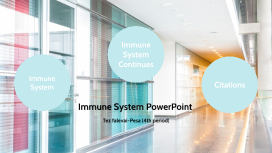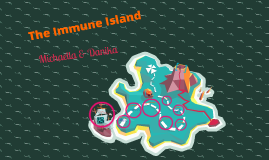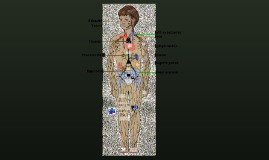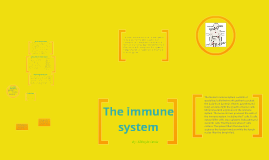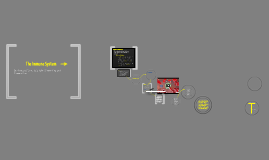immune system
Transcript: B Cells: produce antibodies against bacteria, virus and tumor cells. Antibodies are defined as 'specialized proteins that specifically recognize and bind to one particular protein'. This binding of the foreign body signals other cells to kill or engulf the unwanted substance. Granulocytes: Also known as polymorph nuclear leukocytes (PMNs) are composed of three different cell types; neutrophils, eosinophil and basophils. They basically engulf the foreign body and use their enzymes to degrade them. Macrophages: These scavenger cells also known as antigen presenting cells (APC) pick up the invader and ingest them. Macrophages then present them to the T cells and B cells, thus initiating an immune response. the parts of the immune system •Laughter is the best medicine. This is not just an old saying but laughter induces a proactive immune response that leads to a healthy body. parts of the immune system Bone Marrow: The bone marrow is the production house for B cells, natural killer cells, granulocytes, immature thymocytes, red blood cells and platelets. 1. The first layer is the skin and mucous membranes, which acts as a physical barrier. 2. The second layer is the “innate immune system,” a broad-acting, short-term, non-specific immune response to pathogens such as bacteria or viruses. Microbes that evade the innate system encounter a third layer of protection 3. A powerful mechanism called the adaptive immune response. Here populations of white blood cells known as lymphocytes –B cells and T cells – mount a powerful, highly specific attack on specific pathogens. Lymph Nodes: These immunologic filters of the body fluids are found all over the body. The antigens are filtered through the lymph nodes and the macrophages and dendritic cells capture these antigens and present them to the T and B cells, thus evoking a full-fledged immune response.Bone Marrow: The bone marrow is the production house for B cells, natural killer cells, granulocytes, immature thymocytes, red blood cells and platelets. Thymus: This is where immature thymocytes migrate and are produced as mature T cells. Spleen: The spleen is made up of B cells, T cells, macrophages, dendritic cells, natural killer cells and red blood corpuscles. The spleen produces large amounts of antibodies to fight against antigens and it is a graveyard for old red blood corpuscles. Natural Killer Cells: they kill tumors, like melanomas, lymphomas, viral-infected cells like herpes and cytomegalovirus infected cells. These killer cells act without consulting the lymph nodes unlike the T killer cells. Dendritic Cells: These cells are more efficient than the macrophages as the antigen presenting cells. They capture the antigens and bring it to lymphoid organs initiating an immune response. parts of the immune system Everyone's immune system is different. Some people never seem to get infections, whereas others seem to be sick all the time. As people get older, they usually become immune to more germs as the immune system comes into contact with more and more of them. That's why adults and teens tend to get fewer colds than kids — their bodies have learned to recognize and immediately attack many of the viruses that cause colds. facts you might want to know by: Mikayla Lewis The immune system When antigens (foreign substances that invade the body) are detected, several types of cells work together to recognize them and respond. These cells trigger the B lymphocytes to produce antibodies, specialized proteins that lock onto specific antigens .Once produced; these antibodies continue to exist in a person's body, so that if the same antigen is presented to the immune system so they will not get the disease again. •Lymph nodes, the most important defense mechanisms of the body are not found in the feet! the three layers The most important part of the immune system is probably either the white blood cells or leukocytes. The leukocytes are the actual cells that remember previous germs and attack them. Some specialized leukocytes are B-cells, which find germs, and T-cells, which are sent by the B-cells to kill germs. T-Cells: The T cells are divided into the T helper cells or CD4+ T cells and the T killer/suppressor cells or CD4+ T cells. The T helper cells are used to potentiate immune responses by secreting specialized factors that activate the white blood cells to ward off a possible infection. The T suppressor cells are directly involved in killing the tumor cells, viral infected cells and parasites. The human immune system consists of specialized cells that work together to protect the body from bacteria, viruses, parasites and fungi, and also fight the growth of tumor cells. Many important organs are in the immune system. The bone marrow produces the cells of the immune system, including the T cells, B cells, natural killer cells, macrophages, leukocytes and dendritic cells. The thymus is where T cells mature. The spleen filters the blood and captures the foreign invaders







